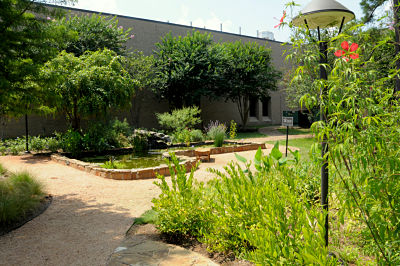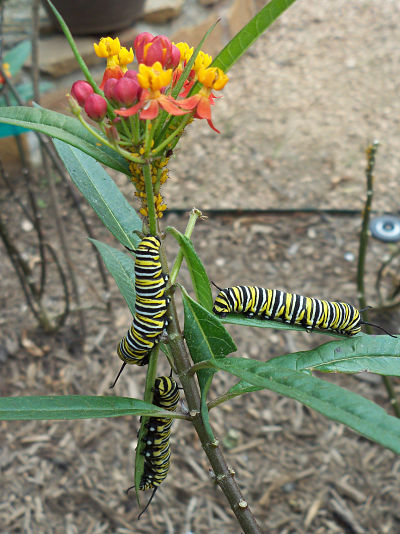 Nestled away between buildings at Lone Star College-North Harris sits the college’s Nature Area. While it is a relatively small part of the 200-acre campus, a closer inspection reveals a deceptively large and thriving ecosystem. Its role in the college’s day-to-day activities is also larger than many would likely suspect.
Nestled away between buildings at Lone Star College-North Harris sits the college’s Nature Area. While it is a relatively small part of the 200-acre campus, a closer inspection reveals a deceptively large and thriving ecosystem. Its role in the college’s day-to-day activities is also larger than many would likely suspect.
The area was created more than ten years ago as a supplemental instruction area for biology classes. The initial project relied on an array of efforts from college and community. Funds from an internal grant competition and the hard work of an aspiring Eagle Scout built the pond. An honors student group, under the direction of one of the college’s biology professor, later dug out a bog area and gathered and planted wetland plants.
However, it hasn’t always been the oasis it is today.
“In the past, there was very little budget for maintenance and upkeep of the biology Nature Area, said Lorey Wing, biology science lab coordinator at LSC-North Harris. “Our biology faculty would enlist students to weed and help maintain the area, but it eventually got to be too much to handle.”
Despite its less than stellar maintenance, the college’s biology faculty members were still utilizing it for their classes. That is when Wing, along with biology faculty Mary Durant, Shelley Penrod and Kara Hagenbuch formed the Math and Natural Sciences Garden Committee.
“We began talking about adding a butterfly garden behind the pond. Kara and I wrote a mini-grant asking for funds to purchase landscape design, which was ultimately approved,” Wing explained.
The resulting plans added not only a butterfly garden, but also an area for native grasses and wildflowers, an addition to the bog area, replanting of the bed along the building, screening of the electric boxes, and plans for an outdoor classroom.
With a new vision for the Nature Area in hand, the garden committee presented the landscape plan to the college president, Dr. Steve Head. He understood the beautification and instructional value their proposal would add to the campus.
 “Our focus is always to help students succeed,” said Dr. Head. “Creating an atmosphere that engages our students and where they enjoy spending their time goes a long way toward accomplishing that goal.”
“Our focus is always to help students succeed,” said Dr. Head. “Creating an atmosphere that engages our students and where they enjoy spending their time goes a long way toward accomplishing that goal.”
Today, the Nature Area is an instrumental part of the biology instruction at the college.
In particular, the new butterfly garden has raised the level of interest for students. During one visit to the Nature Area, students spotted no less than 30 Monarch caterpillars, some of which were brought into the classroom for observation.
“It gives us a chance to teach students about plants and animals in a much more engaging way. Seeing a plant designed to catch insects or a caterpillar hatch into a butterfly adds a lot to the classroom experience,” said biology professor Shelley Penrod.
“The students were amazed at how many monarch larvae and chrysalises we found. Several of them accompanied me back to the garden for a butterfly release. Of course, they were using their cell phone cameras to take lots of pictures. It has definitely added some enthusiasm to the class,” added Penrod.
Plants and butterflies are not the only things to see in the Nature Area though.
“We’ve observed at least 10 species of butterflies, as well as dragonfly nymphs. The pond is home to American Bullfrogs, Leopard Frogs, red eared sliders, and now goldfish. There are quite a few bird visitors including mockingbirds, cardinals and sparrows,” said Penrod.
“It’s not a good habitat for turtles though so we have to warn people not too add them to the pond,” she warned. “When they climb out, they can’t get back in to the water.”
The benefits of the Nature Area also extend beyond the science department. It’s not unusual to see a photography or art student using the area as inspiration for their next project, or to find students escaping the pressures of class and exams with a few quiet moments by the pond.
“It has really been a joint effort across the college and at all levels,” said Penrod. “From our grounds and maintenance departments which assisted with the irrigation installation and built benches for the area, to our president who is committed to creating natural spaces on campus, none of this would have happened without the combined efforts of all of them.”
Lone Star College-North Harris is located at 2700 W.W. Thorne Drive, one-half mile south of FM 1960 East, between Aldine-Westfield and Hardy Roads. For more information about the college, call 281.618.5400 or visit LoneStar.edu/NorthHarris.
With 75,000 students in credit classes, and a total enrollment of more than 90,000, Lone Star College System is the largest institution of higher education in the Houston area, and the fastest-growing community college system in Texas. Dr. Richard Carpenter is the chancellor of LSCS, which consists of six colleges including LSC-CyFair, LSC-Kingwood, LSC-Montgomery, LSC-North Harris, LSC-Tomball and LSC-University Park, five centers, LSC-University Center at Montgomery, LSC-University Center at University Park, Lone Star Corporate College, and LSC-Online. To learn more visit LoneStar.edu.
